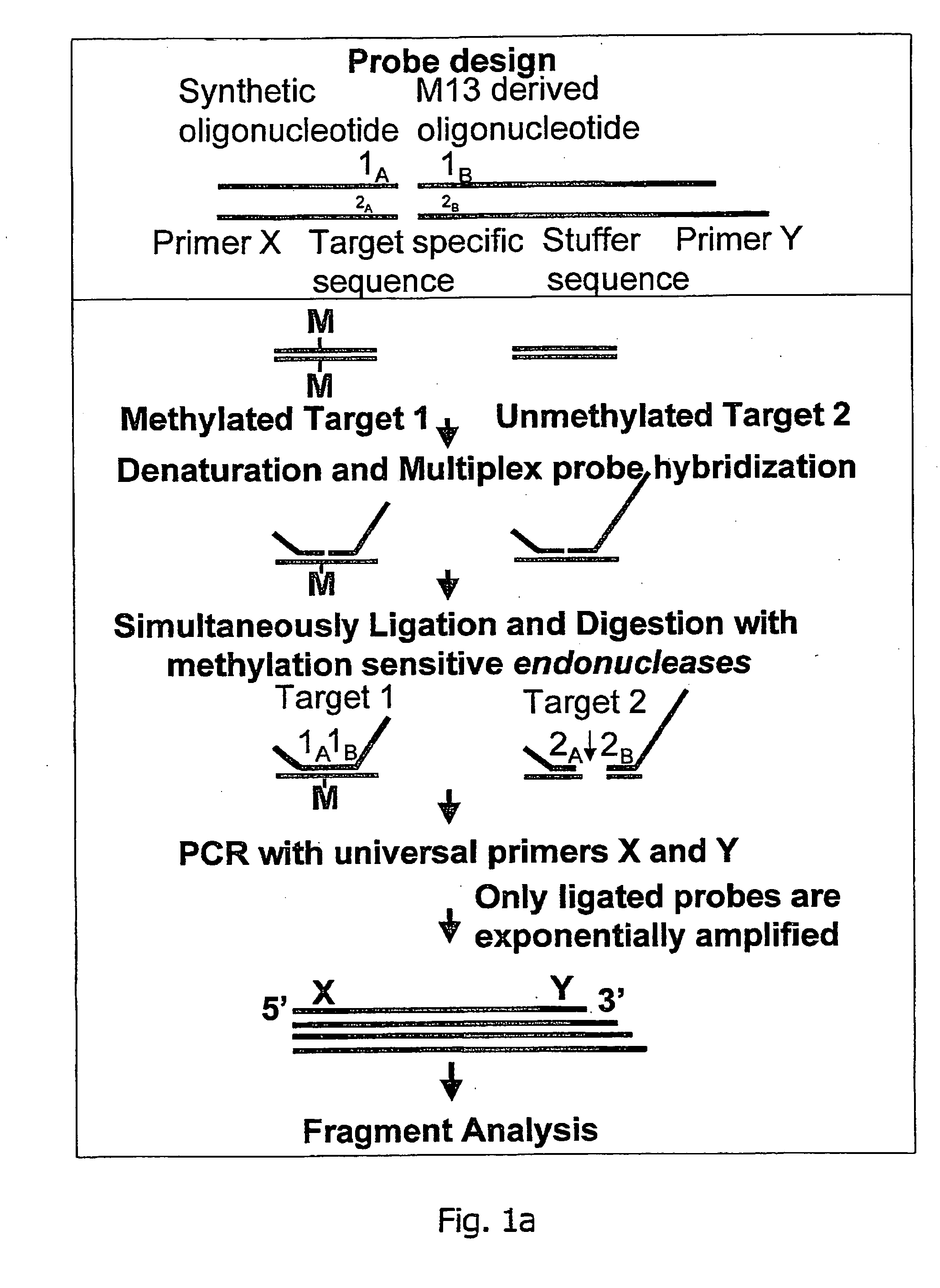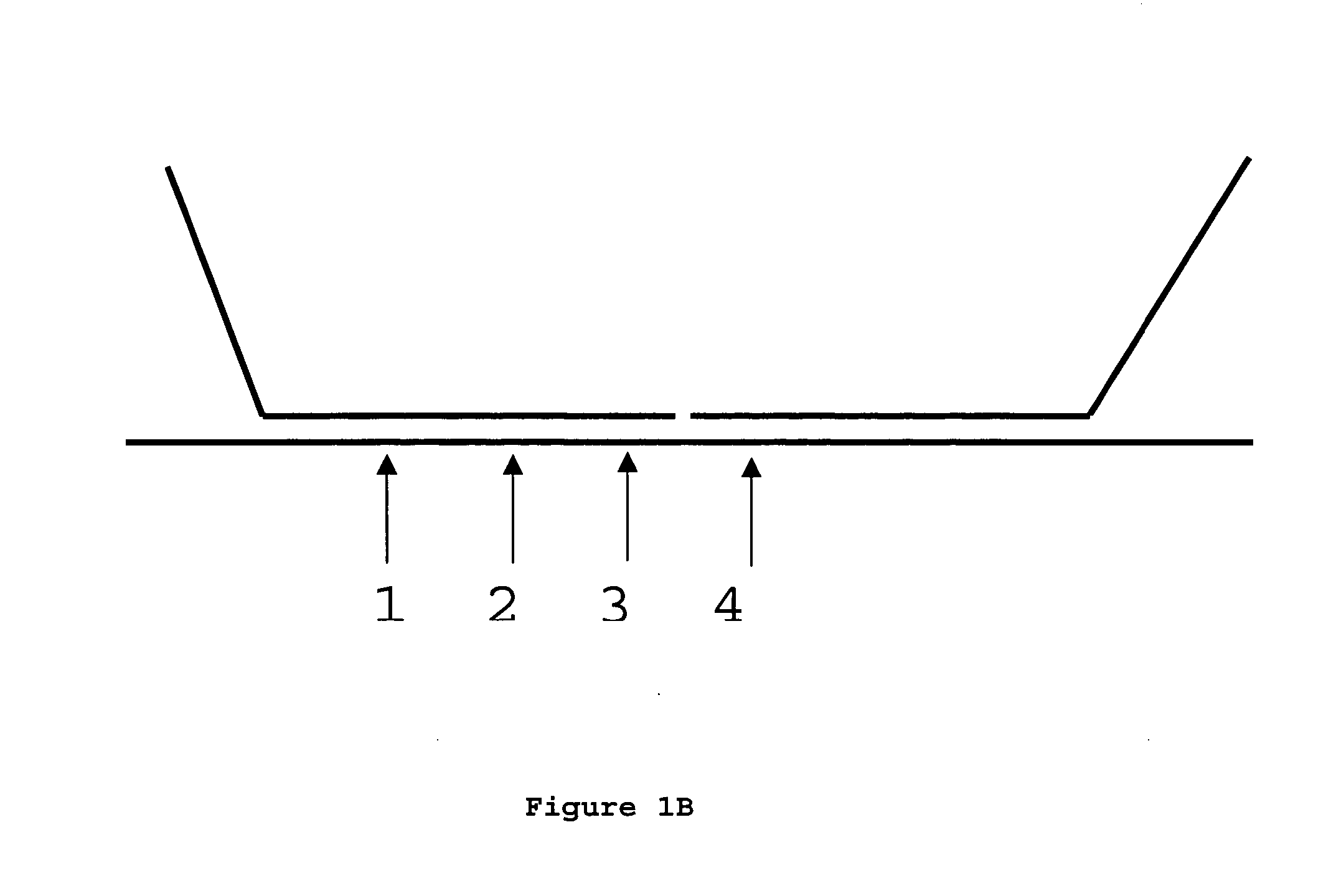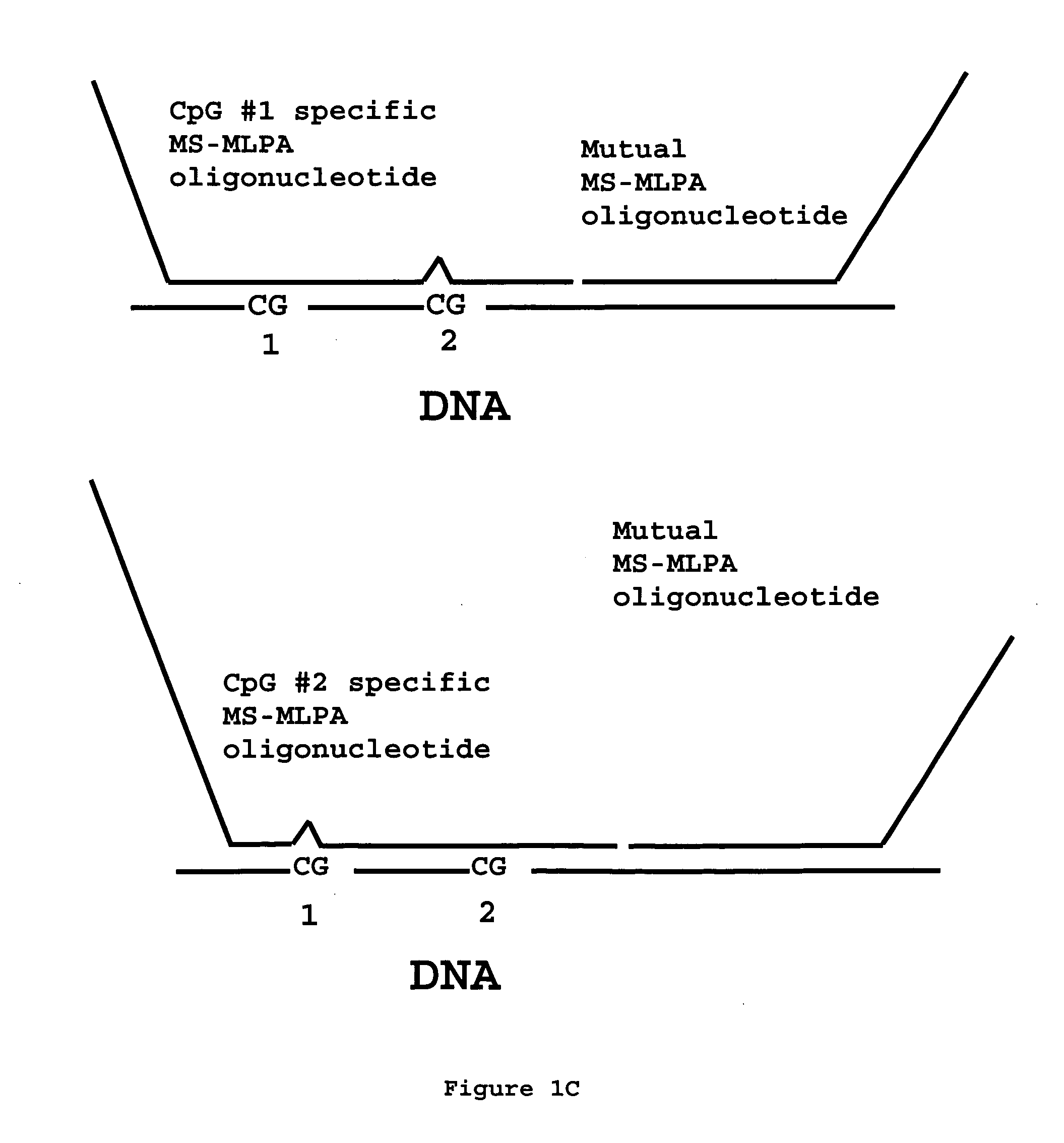Methylation specific multiplex ligation-dependent probe amplification (MS-MLPA)
a methylation and probe technology, applied in the field of methylation specific multiplex ligation-dependent probe amplification, can solve the problems of poor quality, limited amount of dna available for large-scale studies, and labor-intensive methods, and achieve the effect of rapid and easy application of mlpa
- Summary
- Abstract
- Description
- Claims
- Application Information
AI Technical Summary
Benefits of technology
Problems solved by technology
Method used
Image
Examples
example
[0134] DNA Samples
[0135] DNA samples of 16 anonimized patients diagnosed with PWS or AS were kindly provided by Ans van den Ouweland, Erasmus MC, Rotterdam, The Netherlands.
[0136] Genomic DNA was isolated from 21 AML cell lines of patients that had high blast counts. Tumor DNA samples, either paraffin-embedded or fresh-frozen, were kindly provided by Petra Nederlof, Netherlands Cancer Institute, NKI-AvL, Amsterdam, The Netherlands.
[0137] Methylated DNA was obtained by treating human genomic DNA (Promega) with HhaI methylase (New England Biolabs) in the presence of S-adenosylmethionine according to the manufacturer's instructions.
[0138] Paraffin-Embedded DNA Extraction
[0139] Slides with a slice of paraffin-embedded tissue (5 mm×5 mm, lolm of thickness) were heated for 15 min at 75° C. to melt the paraffin. The hot slides were placed in Xylol for 5 min. This was repeated until the paraffin oil was completely dissolved. The slides were then incubated for 30 seconds periods in 99%,...
PUM
| Property | Measurement | Unit |
|---|---|---|
| Temperature | aaaaa | aaaaa |
| Fraction | aaaaa | aaaaa |
| Mass | aaaaa | aaaaa |
Abstract
Description
Claims
Application Information
 Login to View More
Login to View More - R&D
- Intellectual Property
- Life Sciences
- Materials
- Tech Scout
- Unparalleled Data Quality
- Higher Quality Content
- 60% Fewer Hallucinations
Browse by: Latest US Patents, China's latest patents, Technical Efficacy Thesaurus, Application Domain, Technology Topic, Popular Technical Reports.
© 2025 PatSnap. All rights reserved.Legal|Privacy policy|Modern Slavery Act Transparency Statement|Sitemap|About US| Contact US: help@patsnap.com



